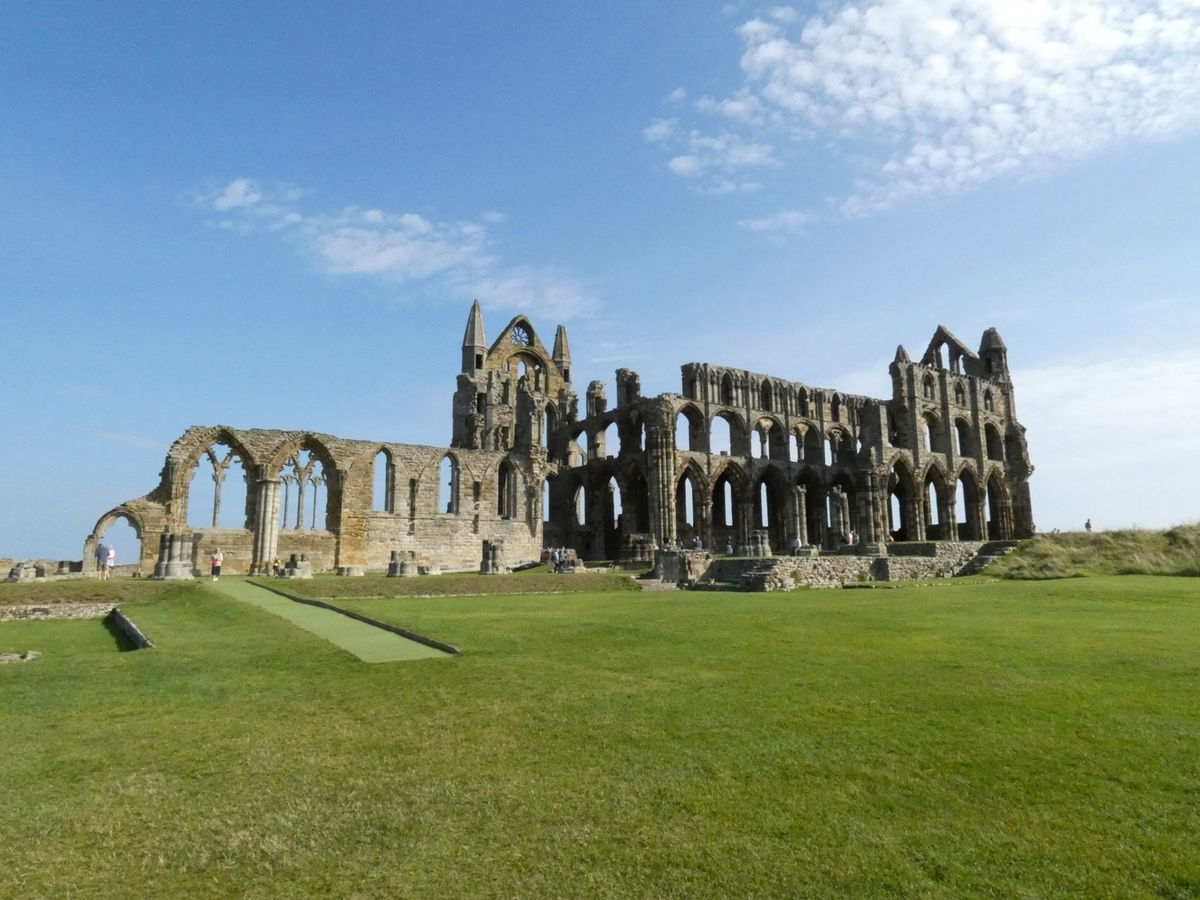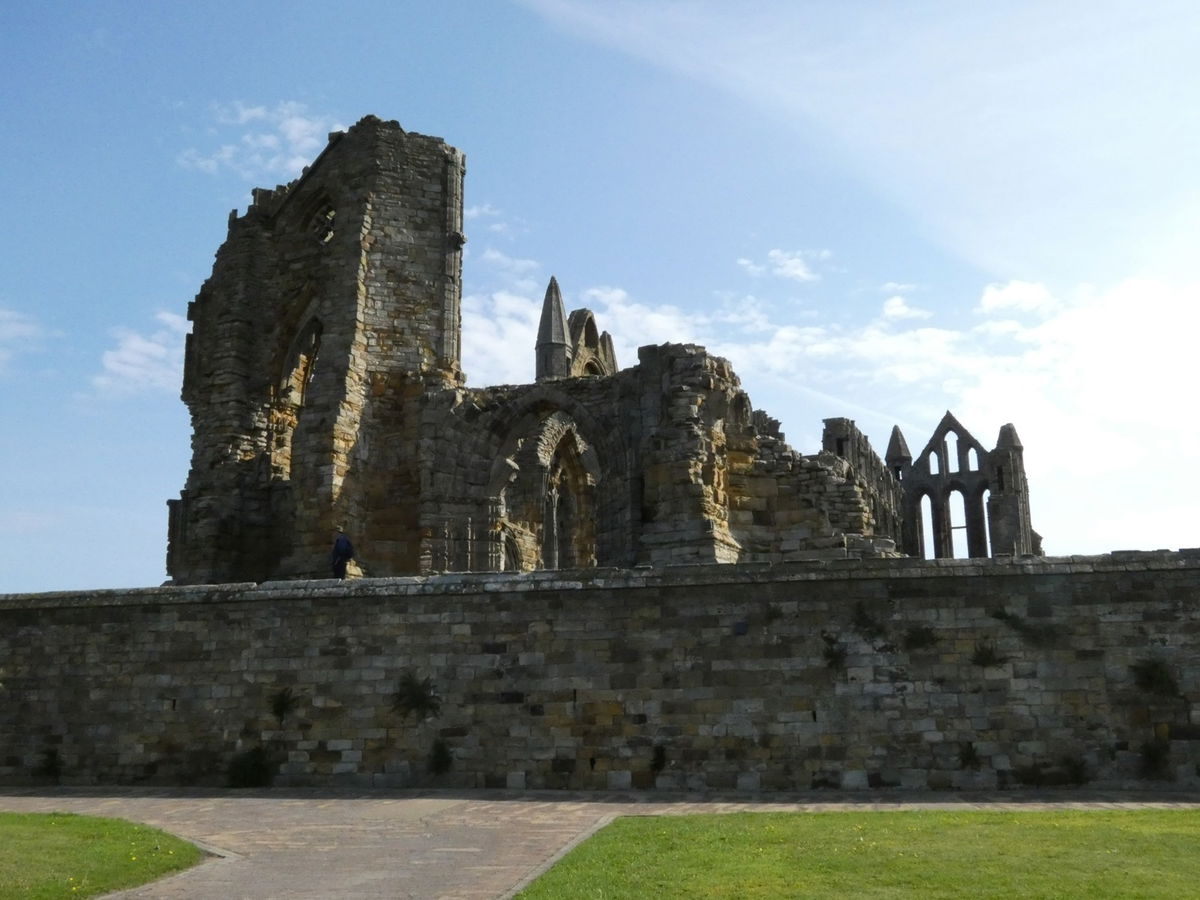Whitby Abbey
Religious Place In Whitby, North Yorkshire
The ruins of a 7th Century Christian Monastery which later became a Benedictine Abbey overlooking the north sea and town of Whitby. Famous for featuring in Bram Stoker's Dracula.

People have lived on the headland at Whitby for over 3000 years, and for many of those years it was a seat of power and religion, while the town thrives as a modern day tourist hotspot it is the ruins of Whitby Abbey that provide the link between the two. Standing high above Whitby the ruins have an atmosphere all of their own, not least due to their connections to Dracula!



Whitby Abbey was founded as a Christian monastery during the 7th century with the church being sited on the clifftop overlooking the north-sea, right at the heart of medieval Northumbria. Founded in 657 AD by Oswy, the Anglo Saxon King of Northumbria, it was named Streoneshalh and Lady Hilda was appointed as Abbess. Both Celtic Monks and Nuns lived in the monastery while another of the residents was Caedmon, the earliest English poet whose name is known. He was actually the cowherd at the monastery!



Between 867 and 870 AD those notorious visitors to the north east, the Danes (Vikings), laid waste to Streoneshalh meaning it was left desolate for almost 200 years until a soldier of William the Conqueror named Reinfrid became a monk and travelled there. He was gifted the land by William de Percy to found a new monastery, which he did to follow the Benedictine rule. This building was pulled down in the main and rebuilt on a much larger scale in the 1220s. During the 13th century the Abbey was rebuilt in the Gothic style with further work being carried out on the Nave in the 14th and 15th century. This Benedictine Abbey was a thriving place and a major centre for learning but was destroyed and all its possessions removed during the Dissolution of the Monasteries by Henry VIII in 1540.



Sir Richard Cholmley bought the Abbey ruins after the Dissolution and it remained in his family and their descendants the Strickland's until 1920 when they passed it to the British Government. Cholmley adapted the Abbot's lodgings into a house. Sir Hugh Cholmley then added a new wing, known as the Banqueting House, in around 1672 along with a new courtyard which provided a formal approach and setting for the house. This courtyard and Banqueting house can still be seen today as part of a museum. The ruined shell of the Banqueting House had a new building slotted into it and the courtyard was uncovered under the grass that had covered it for years.

Whitby Abbey became more ruined over the following centuries and then in 1914 it was shelled by German Battleships who were aiming at the Coastguard Station nearby, sustaining considerable damage in the ten minute duration of the attack. Since that time, the ruins of the abbey have continued to be used by sailors as a landmark at the headland, though not for target practice!

Of course no history of Whitby Abbey, however potted, could not mention its most famous and perhaps scariest link; Dracula! Bram Stoker's novel, written in 1897, saw Count Dracula arrive on a Russian ship at Whitby harbour as a large black dog that leaps off the wreck and runs up the 199 steps to the graveyard of St Mary's Church in the shadow of the Abbey. The ship is left mysteriously crewless and we will leave you to work out what may have happened to them on the journey! The Abbey itself is described beautifully by the character Mina Harker in her diary;
“Right over the town is the ruin of Whitby Abbey, which was sacked by the Danes, and which is the scene of part of Marmion, where the girl was built up in the wall. It is a most noble ruin, of immense size, and full of beautiful and romantic bits; there is a legend that a white lady is seen in one of the windows.”
If you want to know more about how Stoker came up with the tale, the fascinating story is told in more detail on the English Heritage website for the Abbey.

Over the years there have been a number of archaeological excavations on the Whitby Abbey complex, starting in the 1920s under the direction of Sir Charles Peers, with some of the most recent happening between 1993 and 2008 under English Heritage.

One of these recent excavations, done as part of the works to create the new Visitor Centre / Museum and its setting revealed the 17th century cobbled courtyard area beneath a grassed area. I was lucky enough to be working on the Landscape Design side of this project at the time and it was a fascinating project to be involved in. Works were stopped one day, however when a skeleton was discovered in the courtyard area! Thankfully it was a horse skeleton so works could be restarted without too much fuss.

The Visitor Centre provides a tour through the history of the headland and has the customary gift shop at the end for all your pencil and fudge needs!


Get 2 points if you have visited this place. Already visited by 373 VIPs.
Login to the VIP area to add places to your bucket list, mark them as visited and more importantly see where you rank on the league table.
How To Find Whitby Abbey
Where To Park For Whitby Abbey?
Lat / Long
54.485972, -0.604793
What three words
There is a dedicated parking area to the south of the Abbey on Abbey Lane.
Contributed by Andrew Gardner
I love being outdoors, in nature, and experiencing the relaxation it brings. Wandering through the northern countryside seeing unexpected buildings, historic places and occasionally surprised wildlife is one of life's great pleasures.
More Places from Andrew
More Places In Whitby
Find more fabulous places in Whitby, North Yorkshire and if you know of a place we haven't listed, then let us know.

Whitby Piers And Lighthouses
Lighthouse Whitby North YorkshireWhitby’s historic piers and lighthouses tell the story of the town’s maritime past, from Tudor stonework to 19th century beacons.

Pannett Park
Landscape Whitby North YorkshireA 1920's park in Whitby that also houses a Museum and Art Gallery on site.

Bombardment Garden
Landmark Whitby North YorkshireA garden to look like a bombed house, as a memorial to the 1914 coastal attack.
More Religious Places
So this religious place wasn't enough and you want more? Don't worry we have you covered.

Cuddy's Well
Religious Place Bellingham NorthumberlandAn ancient well found by St Cuthbert in Bellingham, topped by a Georgian pant and known for its miracles.

Lowther Mausoleum
Religious Place Penrith CumbriaA mausoleum for William the second Earl, who died in 1844.

St Patrick's Chapel
Religious Place Heysham LancashireRuins of a 9th century chapel, with graves cut directly into the nearby rocks.
Never Miss A Fabulous Place
If you are afraid of missing out on all the fabulous places we post, or just want to be the first to know, then sign up to the Fabulous North.
Each week we will email you all the brand new places that we visit.
Sign Up To AlertsFind Us On Facebook
We post all our new places daily on our Facebook Groups page, so join the group today and be notified when we add a new place.
Join Our Facebook GroupWhitby Abbey was listed in Religious Place // North Yorkshire // Whitby

